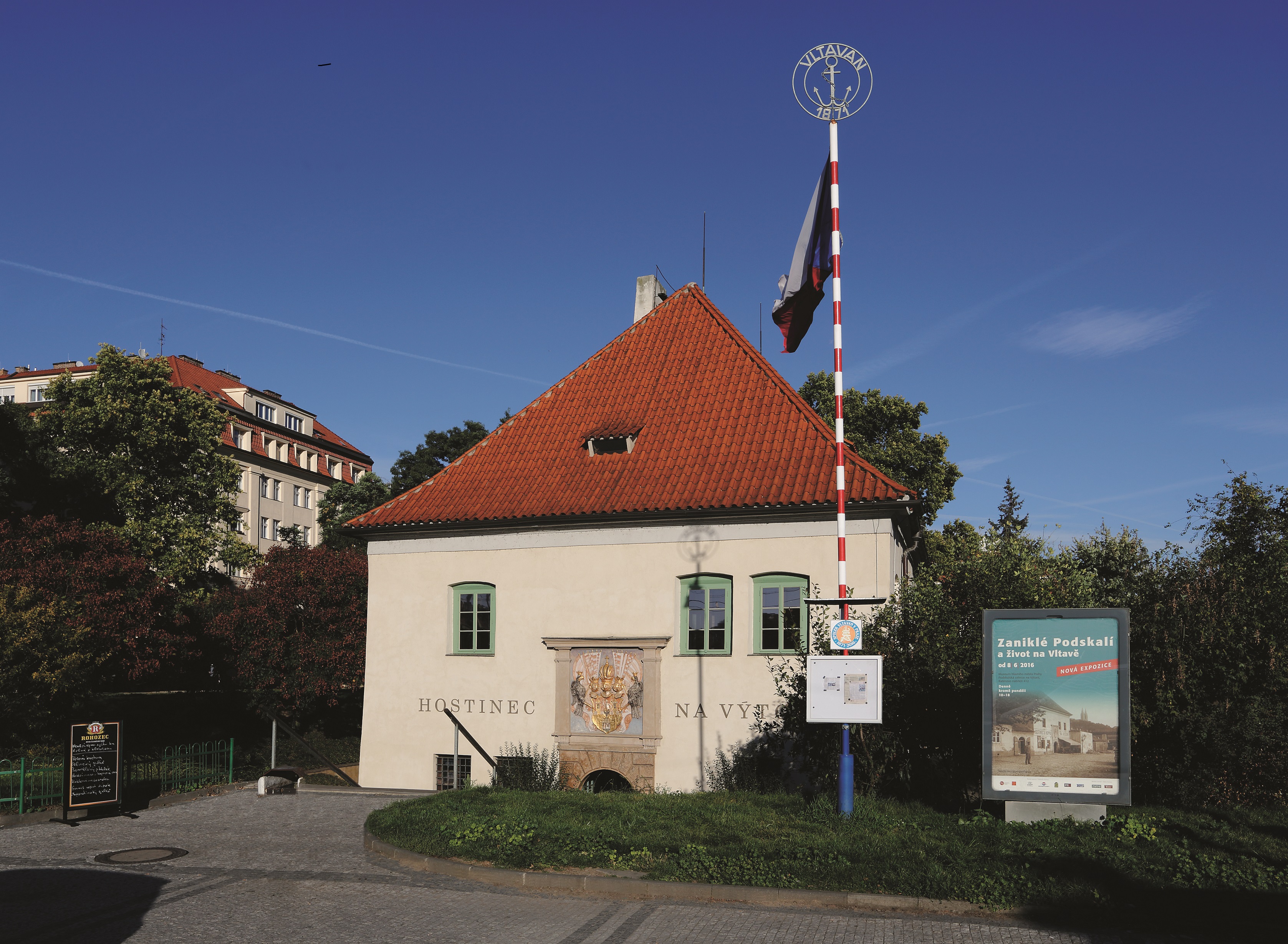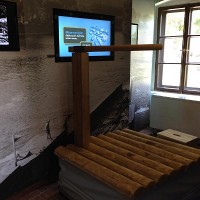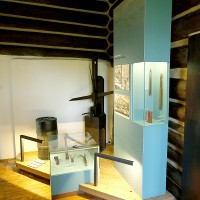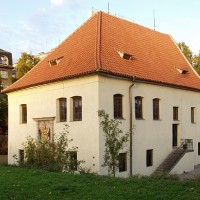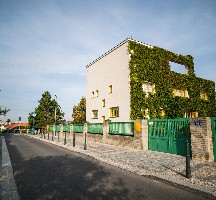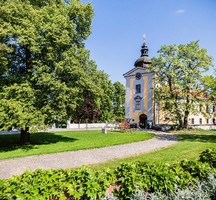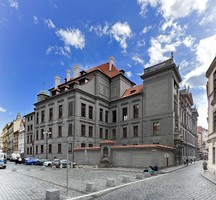Breadcrumbs navigation
The Prague City Museum – The Podskalská Customs Office at Výtoň (Podskalská celnice Na Výtoni)
The Podskalská Customs Office at Výtoň is the last monument that commemorates the beautiful and forgotten times of the Podskalí settlement and the hard work of the Vltava River rafters. It's located on the river embankment in a building from the 16th century. The exhibition is dedicated to the history of the extinct Podskalí settlement, the life of its people, the history of freight and passenger transportation on the Vltava River, and the beginnings of the Vltava steam navigation.
- Monuments & Architecture
- house
- Gothic
- Arts & Entertainment
- museum
- Prague Visitor Pass
Opening hours
-
- January – December
- Sat, Sun
- 09.00 – 18.00
Entrance fee
- basic 60 CZK
- reduced 50 CZK
- family 130 CZK
Contacts
- The Prague City Museum – The Podskalská Customs Office at Výtoň (Podskalská celnice Na Výtoni)
- Rašínovo nábřeží 30
- 120 00 Praha 2 – Nové Město
- +420224919833
- +420224815850
Object history
History of the Building
The building is located nearby the former “výtoniště”, i.e. the place where toll was collected for wood brought to Prague on the Vltava River via floats. The toll, which went to the Vyšehrad Chapter, was collected via cutting out (“vytínání” - therefore the local name Výtoň) certain amount of wood from the floats; later it was paid in money. It was abolished in 1829. In 1561, the New Town municipality purchased the building of today’s museum for this purpose, and this building remained as the only preserved document of old Podskalí, together with the Church of St. Cosmas and Damian. The museum is a late-Gothic wooden house with a plastered ground floor; the upper floor interior kept its log-cabin nature. The toll right of the New Town is commemorated via an emblem above the main entrance from 1671. From the 16th century on, a famous inn was operating in the house, visited not only by the Prague wood farers, but also used as a hostel by the wood farers from the country. In 1833, the house was sold to a private owner. It was threatened by demolition in the early 20th century, but in 1927 the municipality purchased it back and in 1939 it was donated to the The City of Prague Museum. The first exhibition was opened in 1946; the current exhibition dedicated to wood-floating and the extinct settlement of Podskalí was opened in 2003.
Podskalí
The ground plan of the fishing and woodcutters’ settlement already appeared in the medieval times. The buildings were concentrated around two main roads parallel with the embankment, which was lined by a low wall in which there were spaces, the so called “čapadla” (catchers) for taking the floats apart. The first written reference to the village of Podskalí is from 1199 - the name was derived from a rock on which later the Church of St. Jan on the Rock was built. Underneath the rock, there was the oldest core, Lower Podskalí with the Church of St. Cosmas and Damian, which kept spreading out all the way to the Vyšehrad Rock, where there was Upper Podskalí. In 1316, John of Bohemia issued a privilege, which provided the Podskalí citizens with a monopoly in wood trading. A wood faring guild was established in the early 15th century, to be abolished only in 1783, when the wood trading was declared a free trade. During the 18th century, most of the wood-farers’ houses acquired Baroque appearance, which they kept until the end. The character of Podskalí began to change significantly from the 2nd half of the 19th century, first in the lower part in connection with the construction of the Palacký Bridge and the embankment around it. Baroque houses were replaced by modern houses of architects like Jan Kotěra, Alois Dryák, Bohumil Hybšman, etc. The character of Upper Podskalí was similarly influenced by the construction of the railway bridge and namely of the Vyšehrad tunnel in the early 20th century.
Wood Faring
Although John of Bohemia only confirmed in writing the exclusive right of the Podskalí citizens to wood trading in the 14th century, the wood faring and trading was at that time fully developed. Ever since the 13th century, with the city growth also the need for wood as the building material grew, and wood was also used for heating, making of furniture and different tools. Besides wood, salt and other types of food were brought to Prague as well, and the floats even served to the transport of people. Regulation of the river beds started in the 16th century and wood faring kept flourishing - it reached its top in the 2nd half of the 19th century. From the 1930s on, wood faring trade started to decline, mostly in connection with the construction of the dams, the last float went on the Vltava River in 1960, shortly before the completion of the Orlík dam.
Vltavan
Vltavan was established in 1871 as a professional association of wood farers, fishermen and embankment keepers in mutual support. The original purpose was purely charitable - the membership fees were used to pay out support to the ill, to provide for funerals of the deceased, to help out the surviving families. A typical association uniform was made after the model of the French Merchant Navy sailors. In the 50s, activities of Vltavan were suppressed, but it was not completely abolished - it could continue as a hobby group. In 1990 it was renewed in full scale, although at present it rather focuses on informative and social activities - lectures, meetings, balls, and the well known annual commemoration ceremony for the drowned people on the Czech rivers and streams by the Vltava statue in Prague. Among the founders of Vltavan (as well as of the Prague Steam Navigation Company in 1865), there was a significant native from Podskalí, František Dittrich (1801 - 1875). He was born to a rich family, but he soon lost his parents and made living on the floats. He was very competent and talented, and so when he was 25, he started with wood trading and also operated an inn. He did well in his business, and so soon he himself became one of the richest Prague citizens. At the same time, he had very strong social empathy and found different ways to help the poor and the needy. He was the Prague’s chief magistrate in the years 1870 - 73. Limnigraph (water level recorder) It is a minor building on the river bank, directly opposite the former toll house, with a clock face and a scale, on which the course of the water level in time is measured. Information is transferred to the recording machine via a float, and the recording machine is driven by the clock machine. The limnigraph was built in 1907, and it was restored and put into operation again in 2003.
Information source: Muzeum města Prahy
